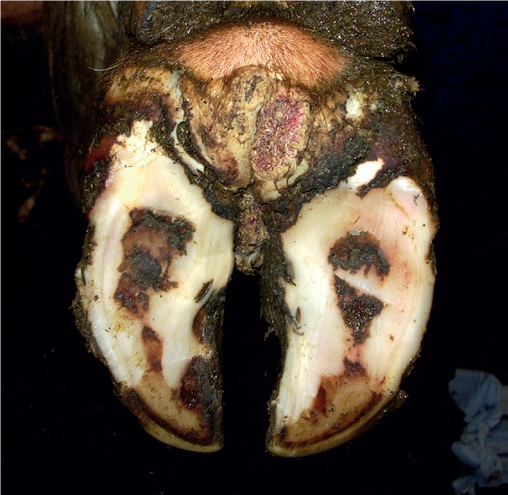Digital dermatitis
The disease will appear as a red (strawberry-like) lesion that is very painful and will often have a bad smell. Digital dermatitis is caused by a mixture of bacteria, including:- Bacteroides nodosus;
- Treponemes;
- Fusobacteria necrophorum;
- Anaerobic bacteria.
The environment in which the cows live also plays a major role. You should ensure the cubicle-shed floor and passageways are regularly scraped to remove manure.
The disease is more commonly seen in housed herds where poor hygiene and wet conditions exist. If the disease comes onto the farm, it can be easily spread through bacteria in the manure.
Footbathing
The most effective way of controlling digital dermatitis is through routine footbathing. But for that to be successful, it must be carried out effectively, according to the Department of Agriculture, Environment and Rural Affairs (DAERA). To ensure that your footbathing solution is effective, the feet of cows entering the bath need to be clean. Slurry on the cows feet will reduce the effectiveness of the solution. One way of cleaning cows' feet before entering the solution bath is to have a water-only footbath available to them.This should remove the majority of the slurry/dung off the feet before the cows enter the bath with the solution.
The length and depth of the footbath (with solution) also need to be considered to ensure product effectiveness. The footbath needs to be long enough for the cow to take three full strides, and the entire foot must be covered with solution.While ensuring that the solution is effective, it is also important that you do not use too much of the chemical. Overuse can damage cows' feet and cause more lameness issues.
The amount of chemical in the solution should be correct to the amount of water that the bath holds, and is needed for an effective footbath. The frequency of treatment depends on the incidence of infection. The minimum regime is to have a footbath after four consecutive milkings each week. It is also important to continue this throughout the dry period.
